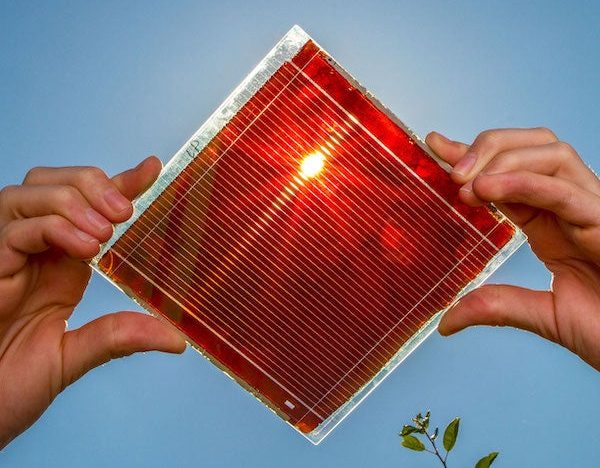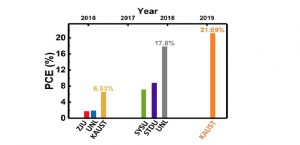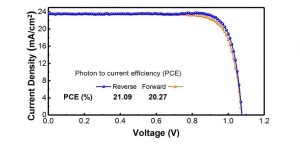Single-crystal perovskite solar cell efficiency has exceeded 21% at the King Abdullah University of Science and Technology (KAUST) in Saudi Arabia, which is working on methylammonium lead-triiodide perovskites.
The cell is part of a project to harness single-crystal growth as a way of avoiding the defects and restricted charge-carrier diffusion length associated with the polycrystalline thin-films normally used in perovskite solar research – which are easier to make.
That said, the researchers – Osman Bakr and Omar Mohammed – point out that the current record for polycrystalline perovskite solar cells is higher than their cell at 24.2%, but this is still well short of the ~30.5% theoretical Shockley–Queisser limit for methylammonium lead triiodide single-junction cells.
“We reasoned that these single crystals offer a chance for perovskite solar-cell technology to overcome these [polycrystalline] limitations and get as close as possible to the theoretical efficiency limit,” said Mohammed.
The KAUST single-crystal films were grown by starting the crystallisation between two polymer-coated substrates that physically restricts crystal growth to one dimension under heating.
Growing thin layers, according to Bakr, is extremely challenging. The record was achieved with a 20μm absorber, to the relief of the researchers who initially thought that they would need to grow much thinner crystals.
According to the paper ‘Single-Crystal MAPbI3 Perovskite Solar Cells Exceeding 21% Power Conversion Efficiency‘, which describes the work in ACS Energy Letters, the devices use an ITO/poly(triarylamine)/perovskite/C60/bathocuproine/copper inverted p-i-n architecture.
Other important parameters achieved were: 83.5% fill-factor, 23.46mA/cm2 short-circuit current and 1.076V open-circuit voltage. Hysteresis was “negligible”.
“The high efficiency and fill-factor highlight the promise of single crystals for advancing perovskite device technology, which could be a parallel development path to the one taken by their polycrystalline counterparts,” according to the paper.






